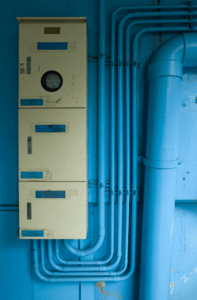Most homeowners in North America and the Pacific Northwest who want to retrofit an old house or build a new one rely on baseboard heaters as their primary source of heat.
It’s a good idea to know what to look for before buying a hydronic baseboard heater. Hydronic baseboard heaters come in a variety of lengths to accommodate the area that needs to be heated.
In this guide, we are going to educate you on the best hydronic baseboard heaters buying tips. Moreover, we’ll look at the tips of baseboard heater installation and the benefits and drawbacks of the hole component
Best Hydronic Baseboard Heater Buying Tips
1. Best voltage for a hydronic Baseboard Heater

Before installing baseboard heaters, it’s important to take into account the electrical codes associated with them.
A heater without enough capacity won’t heat the space properly, and you’ll find yourself using it much more often and at much higher temperatures.
Electric hydronic baseboard heaters come in either 120- volt or 240-volt models.
- A 120-Volt Baseboard Heater
A 120v hydronic baseboard heater is most suitable as a supplemental source of heat to zones and seasonal rooms.
- A 240- Volt Baseboard Heater
A 240v hydronic baseboard heater is best used as a hard-wired baseboard heater that is wired directly into a household circuit to act as the central heating system.
2. Best Size Hydronic Baseboard Heater
Manufacturers have Hydronic baseboard heaters with different specifications ranging in terms of length from 24 inches to 96 inches. The longer the baseboard heater the more wattage it is going to produce.
If you are unsure of what length you should get that will offer sufficient heat, determining the measurement is a practical easy procedure.
- Step 1
Measure the length and width of the room to determine the square footage.
- Step 2
Multiply the square foot answer to 10 watts. The figure is the baseline wattage per square foot. 10 is an average watt required to heat a square foot. You generally need 10 watts per square foot.
- Step 3
Determining the total wattage of a typical room is run by adding 10% to each window, exterior wall, uninsulated space, poorly insulated wall e.tc.
Divide the answer by 240 to get the length of the hydronic baseboard heater. The 240 factor is the voltage of a typical baseboard heater.
For example,
- Assuming a 225 square foot room.
- Multiplied by 10 to give 2250 watts.
- Add 10% for one window to get 2475 watts.
- Adding 10% for an uninsulated wall to get 2722.5 watts.
- Then dividing the figure 2722.5 by 240 factors you get 11 inches.
- Rounding this figure to get an estimated length of 12 inches which is a 96-inch long baseboard heater.
3. Best Energy Efficient Hydronic Baseboard Heater
Some heaters have ‘eco’ settings for better energy conservation. They are energy-efficient units with innovative energy-regulating thermostats that are designed with smart features and are programmable.
The programmable thermostat provides the most convenient and flexible way of avoiding wasted energy from overheating.
Households that choose to install smart thermostats with baseboard heating on average get a 30% reduction in energy consumption.
Recommend Post: Hydronic Baseboard Heaters Review
4. Best Design Framework Hydronic Baseboard Heater
According to the interior design of the room, you can think of the external structure of the foundation. To prevent the paint from colliding with the background color, you can choose a heater that matches the color layer.
Baseboard heaters are available in a variety of colors. They are available in gold, cream, white or black.
5. Best Hydronic Baseboard Heaters Installation Tips
When installing a baseboard you’ll need professional installation. However, having these tips can be handy.
· Circuitry
Depending on the total wattage of the baseboard heater, the general rule of thumb is a 20-amp circuit for a 12-gauge or 30-amp circuit for a 10- gauge wire for either type of heater.
· Install beneath windows
The best location to install the baseboard heater is on the external wall below the window for slow and steady heat. The reason for this is that cool air coming from the window area is warmed before it hits the floor.
· Baseboard Thermostats
For best performance, thermostats are best mounted on an interior wall but not directly above the heater.
This will allow the warm air to cover the area of the house before the thermostat turns the heater off till the air cools, and the cycle will start over again.
· No Direct Contact with Floors and flammable materials
It’s recommended to not set the baseboard heater in direct contact with the floor maintenance but to keep at least an inch of clearance under the baseboard heater.
This is because your home may have carpeting or flammable floorings like carpet, vinyl, tile, or hardwood.
This keeps the heater at a safe distance to avoid igniting due to the interaction of the carpet and the heat of the heater.
Are hydronic baseboard heaters worth the money?
Designed to be permanent inbuilt systems, hydronic baseboard heaters are sleek in design and can easily be integrated into the layout and décor of a home.
Although Hydronic baseboard heaters Take longer to warm up a room, they have a surprisingly wide range of benefits.
· Save money
Hydronic baseboard heaters can continue to radiate heat even after the thermostat has been turned off. This is due to the asbestos tube element, which heats up and retains heat to keep the room temperature stable.
As a result, they are more energy-efficient, which means you will save money on your final electric bill.
- Consistent warmth in your home

A sealed heating tube element in hydronic baseboard heaters converts all-electric power into heat. Because water runs the entire length of the heating system, the heat is distributed evenly rather than concentrated in a single hot spot.
The design’s success is also aided by the asbestos tube element and the large diameter reservoir, which maximizes the volume of heat transfer fluid. Even after the thermostat has been turned off, the water temperature is maintained, ensuring a constant flow of warmth.
- Quiet operation
Due to their fanless operation, hydronic baseboard heaters are quiet, clean, and provide comfortable heat, unlike traditional baseboard heaters. As a result, they’re ideal for use in bedrooms and living rooms.
·Material of high quality
Hydronic baseboard heaters are constructed of tough steel that is both strong and long-lasting. Colors are also available for baseboard heaters. There is a golden, cream, white, or black baseboard heater to match your home’s interior design.
Furthermore, hydronic baseboard heaters frequently include a front grille to prevent foreign objects from entering the heater’s internal area.
Are hydronic baseboard heaters safe?
The hydronic baseboard heater is protected from overheating by a baked enamel element. Aside from that, the design of hydronic baseboard heaters allows the liquid to flow throughout the system rather than condensing in one spot.
Additionally, they have lower surface temperatures than standard baseboards, which protects against surface burns. This is a good option if you have children or pets.
Baseboard heaters are much more environmentally friendly. Because of its fanless operation, the heater does not singe airborne particles in the air, dry it out, or blow dusty air and other pollutants through a series of old vents as much as a standard baseboard heater. As a result, they have no effect on the health of those who are allergic to them.
How do you install a Hydronic Baseboard Heater?
Installing a baseboard might be a hands-on job that requires a lot of plumbing and soldering and is the best leftover to a professional.
However, below is a breakdown of the step to install a baseboard heater.
Step one is locating a heater location. The best location should be typically 15 inches from any furniture.
The second step is measuring the dimensions of the room in square feet.
The third step is identifying a suitable baseboard heater. Work out how many the wattage of your heater and use the dimensions of your room to determine the right size of the hydronic baseboard heater. Use 10 watts per square foot.
The Fourth step is locating the Hydronic baseboard heater thermostat; some thermostats can be mounted right on the baseboard heater front panels or mounted on a standard wall.
The fifth step is noting the input and output pipe
The final step is the installation process
Check all the parts of the baseboard heater and look at the installation manual. Ensure that all parts are available.
Do a practical dry fit of the system first to get a picture of the layout. This will give you a guide on how to set the system up.
Once you are confident of the setup of the system, mount the baseboard and screw it into place. Start running the hot water pipes and solder the joints and connect them to the baseboard heater. In case the job gets overwhelming, you might consider getting some assistance.
Regular repair and maintenance
Having a regular inspection done on the hydronic baseboard will ensure it keeps running smoothly.
How do you maintain the hydronic baseboard heater?
First monitor the thermostatic pressure to make sure it measures the temperature, pressure, and height of the water in the unit. Failure to check the pressure gauge could put you at potential risk if the pressure exceeds 30 pounds. The optimal pressure should be between 12 pounds to 15 pounds.
If the pressure is too high, drain the excess water. Locate the drain valve then turn off the power unit. Then drain off the excess water until the meter is reset.
Hydronic baseboard heaters covers
Perhaps you would want to put a cover on your hydronic baseboard heater. Either because you can’t find a hydronic heater that matches interior decor or you simply want to replace the one you use for reasons which could be the cover is discolored or damaged.
Don’t worry, you can find a hydronic baseboard heater cover that best suits you.
Baseboard Heat Covers, Baseboard Heater Cover With Caps
This is an elegant baseboard cover with superior quality that comes in a variety of measurements available from 2 to 8 feet. Besides having long-lasting qualities, they are also easy to clean.
FAQs
1. What Is A Hydronic Baseboard Heater?
You may wonder, what is a hydronic baseboard heater?
To answer the question, let’s isolate each component of the word Hydronic baseboard heater.
It’s called hydronic because it uses a liquid as a medium. The liquid is typically water or mineral oil.
The use of the words baseboard heater means, that the heater is installed externally on a wall near the floor as opposed to mounting inside walls or freestanding.
So a hydronic baseboard heater is a device that uses water to some capacity and is attached to a wall at the floor level at a central position. Heating pipes are run under the floor, which is designed to be used to transfer and emit heat across several rooms or zones. This creates an inbuilt heating system.
Hydronic baseboard heaters evolved from the old hollow cast iron radiators to today’s trendy and beautiful and stylish baseboard heaters.
Hydronic baseboard heaters are long and relatively slim and provide a low-cost, simple method of warming up your home.
2. How does a Hydronic baseboard heater work?
Hydronic baseboard heaters are common in many homes.
However many people do not know the technical aspect of the hydronic baseboard heater.
Basically, a hydronic baseboard heater uses the same principle of radiation as the sun to warm up your home.
The baseboard heater contains a heating element surrounded by a metal tube. The metal tube is filled with water.
When the heater is switched on, the electricity heats the element in the tube which then heats the water inside.
The water turns hot which then disperses the heat to the aluminum fins along the heater tube. This heat up the surrounding air before the air starts circulating throughout the room or heating zone.
The piping system then further channels heat into more rooms. Heat is sourced from the central baseboard heater, is maintained through flow control valves. In this way, hot water regulates the temperature according to the settings on the thermostat.
convection baseboard heaters are other baseboard heaters that typically resemble hydronic baseboards in terms of design characteristics.
They are placed under windows and are used to warm up small rooms. Unlike hydronic baseboard heaters, convection heaters aren’t able to diffuse the heat produced so they require a fan.
They draw cool air in from close to the floor, through the bottom, and project it up and a small fan pushes the warm air out overheated fins on top of the heating unit into the room.
3. Are hydronic baseboard heaters self-contained?
Hydronic baseboard heaters are self-contained types. You can move the baseboard heater anywhere in the room.
Nevertheless, you can opt for a central location for the baseboard heaters.
4. How many hydronic baseboard heaters do I need?
You only require one baseboard heater to warm your home with hydronic baseboard heaters. For small rooms or zones use an electric baseboard heater because they are most convenient and are quick to install.
5. Will hydronic baseboard heaters freeze?
The liquid inside hydronic baseboard heaters is made of specially treated water that cannot freeze regardless of the outside temperature. The asbestos material used maintains the temperature of the liquid to continue emitting heat even when the baseboard heater has been turned off.
Conclusion
Technology has allowed us to bring comfort to our homes during the cold months with Hydronic baseboard heaters which give a very convenient and effective source of heat to add comfort to your home.
Whenever you go shopping for baseboard heaters, it’s important to consider the proper dimensions of your room size and the baseboard heater.
Related Post:
- 26 Backyard Shower Ideas That Turn Your Outdoor Space Into a Spa - July 11, 2025
- 26 Breathtaking Farmhouse Kitchen Designs to Inspire Your Remodel - July 10, 2025
- 22 Modern Dark Bedroom Aesthetic Ideas You’ll Love and Copy - July 9, 2025

